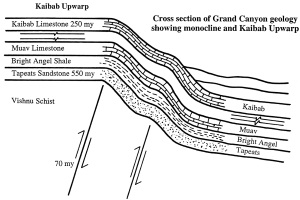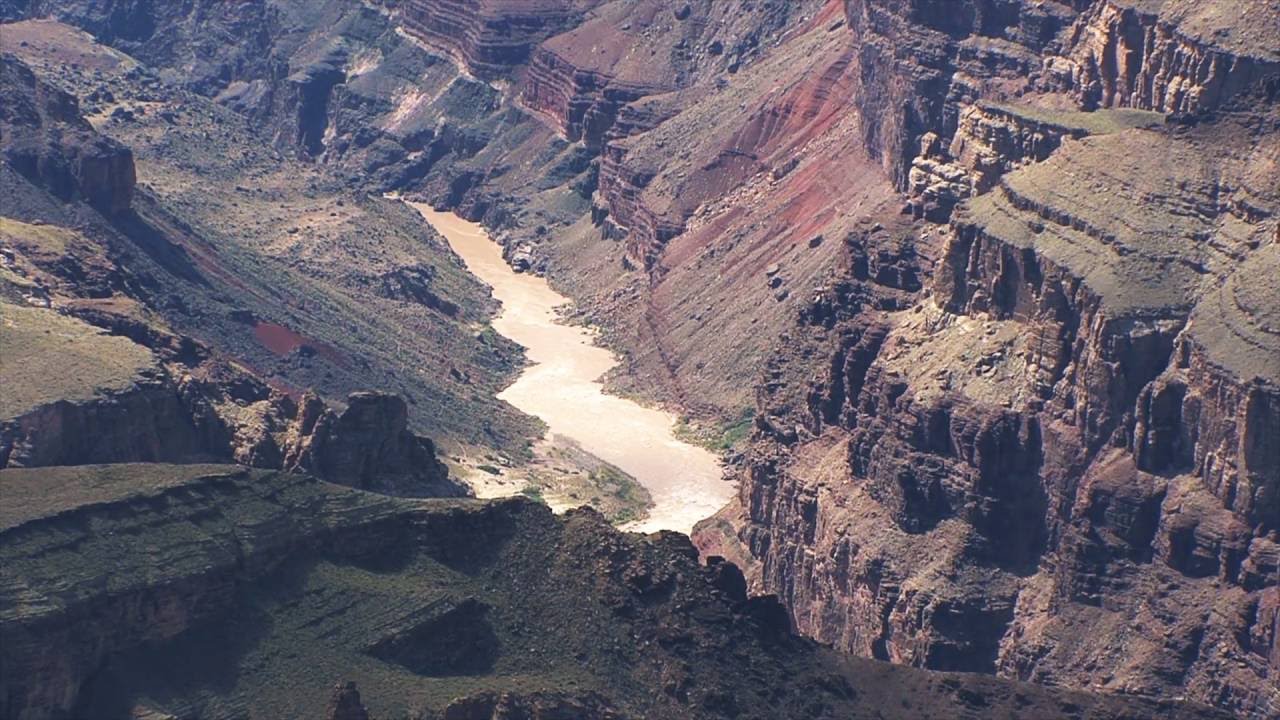Grand Canyon strata show geologic time is imaginary

Visitors to Grand Canyon hear the usual geological interpretation involving millions of years. We are told that the horizontal formation at the bottom, the Tapeats Sandstone, was deposited 550 million years ago, and the Kaibab Limestone that forms the rim is 250 million years old (see diagram). It is difficult to imagine the immense time involved in this interpretation.
Interestingly, the Grand Canyon strata extend over 400 km (250 miles) into the eastern part of Arizona.1 There, they are at least 1,600 m (one mile) lower in elevation. Supposedly, the uplift of the Grand Canyon area occurred about 70 million years ago—hundreds of millions of years after the sediments were deposited. One would expect that hundreds of millions of years would have been plenty of time for the sediment to cement into hard rock.
Yet, the evidence indicates that the sediments were soft and unconsolidated when they bent. Instead of fracturing like the basement did, the entire layer thinned as it bent. The sand grains show no evidence that the material was brittle and rock-hard, because none of the grains are elongated.1 Neither has the mineral cementing the grains been broken and recrystallized. Instead, the evidence points to the whole 1,200-m (4,000-ft) thickness of strata being still ‘plastic’ when it was uplifted. In other words, the millions of years of geologic time are imaginary. This ‘plastic’ deformation of Grand Canyon strata dramatically demonstrates the reality of the catastrophic global Flood of Noah’s day.
Reference
- Morris, J.D., The Young Earth, Master Books, Arizona, pp. 106–109, 1994. Return to text.




Readers’ comments
Comments are automatically closed 14 days after publication.